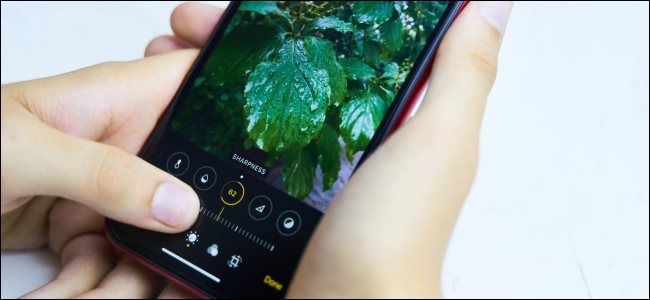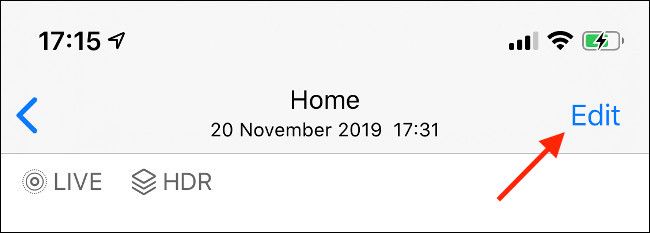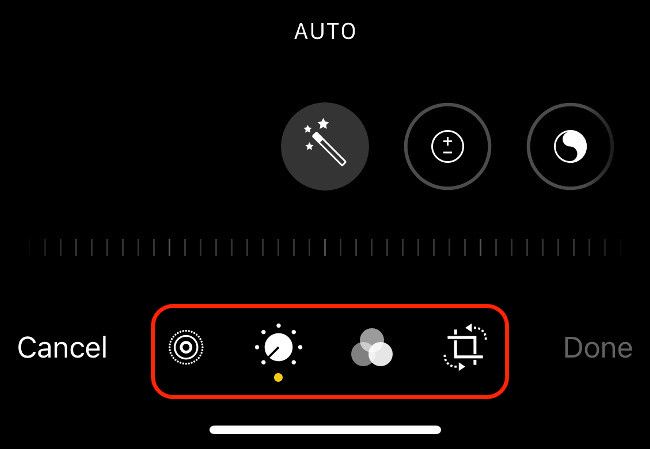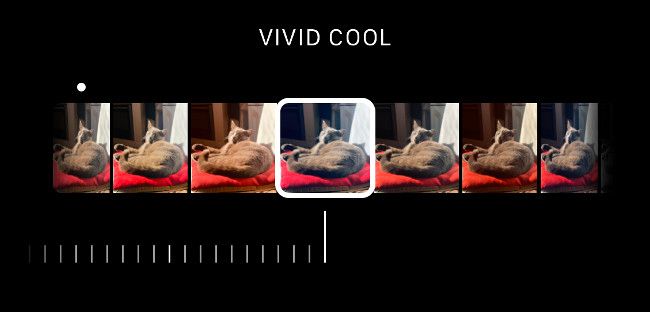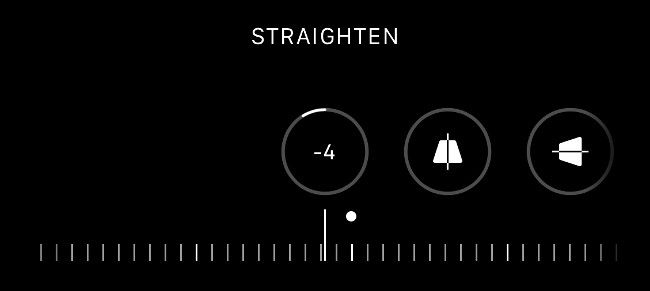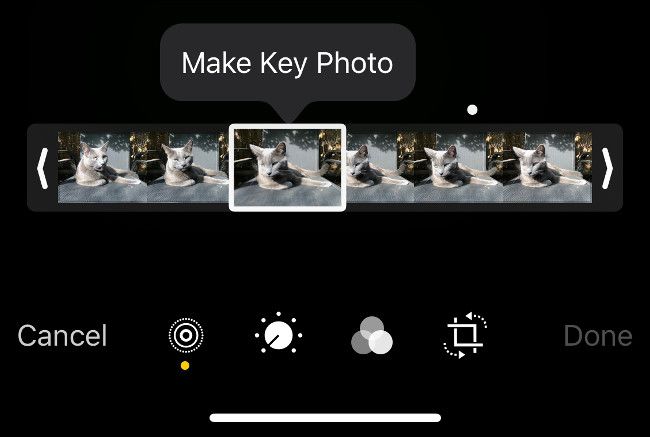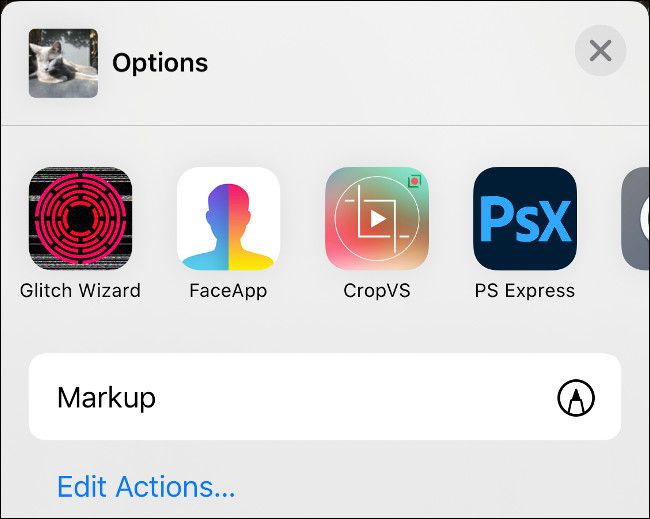Quick Links
You can use your iPhone to capture and share images in seconds, but it might be worth pausing before you hit upload. Editing your photos before you share them can make a huge difference to the final image, and everything you need is already built into the Photos app on your iPhone.
How to Edit Images in the Photos App
In addition to being a great camera, the iPhone is a photo-editing powerhouse. Apple's built-in tools are more than enough for most users to take a mediocre image and elevate it to the next level. Performing quick edits and crops has never been easier.
You can edit photos on an iPad, too. If you have iCloud Photo Library set up, photos you take on your iPhone will sync to your iPad where you can edit them on the bigger screen.
Photo editing in Apple's Photos app is non-destructive. As the term suggests, this means you can make all sorts of edits to your photos and still revert to the original if you want. It means you can make adjustments, apply filters, and crop your image without worrying about destroying anything.
To edit an image on your iPhone, first locate it in the Photos app. Once you've found an image, tap on it to view it, then tap "Edit" in the top-right corner of the screen. If you have iCloud Photos enabled, you'll need to wait a second for the full-sized image to download. You'll be able to edit your photos.
Across the bottom of the screen, you will see four buttons, each referring to a particular set of editing tools. From left-to-right they are:
- Live Photos: Only visible if your image is a Live Photo (video recorded along with a still image).
- Adjust: Standard editing controls you'll find in most image editing apps.
- Filters: Apply or remove Apple's photo filters.
- Crop/Straighten: For changing the aspect ratio, cropping, and more.
We'll take a look at how each of these works in more detail below.
Previewing Your Changes
At any point while editing your image, you can tap on the photo to see the original. This provides a point of reference for any edits you have made. You can see whether your changes enhance the image or not.
If you're editing a Live Photo, which is simply a still image with three seconds of video for context, you can also tap and hold the image at any point to see how your edits affect the video.
Revert to Your Original Photo
Non-destructive image editing means you can always get back to your original image if you want. You can do this by editing your image and changing or undoing any parameters you've changed, but there's a quicker way to discard all of the edits on a photo.
To get back to your original image, find it in the Photos app, then tap "Edit" in the top-right corner. Tap on the red "Revert" button in the bottom-right corner of the screen to discard all of your edits. You can't get these edits back (without reediting all over again), so make sure you're happy before you commit.
Making Image Adjustments
The vast majority of editing tools are found under the "Adjust" option, which is automatically selected whenever you tap on the "Edit" button in the Photos app. You'll find the standard photo-editing tools for changing the way your photo looks here.
In total, there are 15 adjustment parameters and an "auto" option with a "magic wand" icon. Tap the wand to enhance the image automatically, then move the slider left and right to adjust the image. Tap on the wand again to undo these changes.
While automatic edits make it easy to improve a mediocre image, you'll learn more about photo editing in general by experimenting with the other options. If you want your images to exhibit a unique sense of style, manually editing your image is a must.
Light Adjustments
These parameters primarily affect the light in your scene, giving you the ability to increase overall exposure and boost or tone-down shadows and highlights. Remember that because images are compressed, a lot of data is lost as a result of slimming-down file sizes, which limits just how much recovery you can do for an over or under-exposed image.
- Exposure: Determine how much light is in the scene, providing a uniform increase or reduction of the total light in an image.
- Brilliance: Brighten dark images while increasing highlights and contrast (and vice versa.) Often used to boost dark and dreary images.
- Highlights: Highlight the lightest parts of your image. Reducing highlights may recover some detail in over-exposed areas.
- Shadows: Shadows are the darkest parts of your image. Increasing shadows may recover more detail in underexposed areas.
Color Adjustments
You can change the look of your image by adjusting the various color options. These can be used to make images "pop" by tweaking contrast or saturation, or to correct white balance inaccuracies for more natural-looking skin tones.
- Contrast: The overall difference between color tones in the image. Increasing contrast makes for a more striking image at the cost of detail in the shadows and highlights.
- Brightness: Lighten or darken your image without adjusting exposure and risking under- or overexposing areas of your image.
- Black point: Target the darkest parts of your photo. Increasing the black point will saturate blacks to create a more contrasted dramatic image.
- Saturation: Determine how colorful an image is overall. Turn it all the way up for loud colors, or all the way down to create a monotone (black and white) image.
- Vibrance: Target the dullest colors in your scene while limiting changes to skin tones. Like the saturation tool, but tamer.
- Warmth: Adjust the overall temperature in your image by turning this up to warm the image and down to cool it off. Good for correcting white balance.
- Tint: Apply a green or magenta tint to your photo. Turn it down for green, up for magenta. Use in conjunction with the Warmth tool to correct white balance.
Detail Adjustments
The overall amount of detail in your image is limited by the sensor size of your iPhone. Software processing can help bring out details or hide unsightly noise, just be careful not to overdo it particularly if you're going for a natural look.
- Sharpness: Apply digital sharpening to your image.
- Definition: Make small adjustments to contrast for a more striking image.
- Noise reduction: Apply digital noise reduction to a grainy image---for example, one shot at night in low light.
- Vignette: A vignette is a dark or light ring around the edge of an image, which is often an unwanted effect of shooting with certain lenses.
Editing with Filters
Tap on the "Filters" button to the right of the "Adjust" section to see a selection of Apple photo filters. Swipe through them and tap on one to apply it, then move the slider underneath to adjust the intensity of the effect. You can only apply one filter at a time.
Like Apple's other photo-editing tools, filters are non-destructive. You can apply a filter, save your image, then come back at any time and select a different filter (or turn filters off altogether).
It's also possible to shoot with filters enabled. Launch the camera app and look for the familiar filters icon in the top-right corner of the (portrait) screen. Even if you shoot an image with a filter enabled, you can still remove that filter or switch to a different one using the built-in editing tools.
Crop, Straighten and Perspective
To the right of the other editing tools are the crop, straighten, and perspective tools. When you tap on this section, you'll be given manual straightening tools at the bottom of the screen. Move the slider left or right to reposition your image as you see fit.
There are also two perspective correction tools: one titled horizontal, and the other vertical. These tools distort the image on either a horizontal or vertical axis to correct for perspective distortion. A good example would be a picture of a building taken at a wide focal length, which has caused the straight lines in the image to distort.
There are also a few new options that appear at the top of the screen. On the far left, you have the mirroring tool, which mirrors the image as it currently appears. Next to that is the rotate tool for quickly rotating an image 90 degrees clockwise. If you see an "Auto" button in the middle, tap it and your iPhone will attempt to straighten your image automatically.
On the right-hand side of the screen is the aspect ratio tool. This allows you to pick from a predetermined aspect ratio including portrait/landscape and square presets.
You can use these tools to crop your photos for a better composition, to remove sensitive information from a screenshot you intend to share or to create square format images from portrait and landscape shots. Just like the other tools on this list, you can always get back to your original photo by reediting.
Grab Stills from Live Photos
When you tap Edit on an image in the Photos apps, you might see a Live Photo icon at the bottom of the screen. (It looks like a circle surrounded by a dotted circle.) Tap this to see the three or so seconds of video that was recorded alongside your photo.
You can trim this video just as you would any other by grabbing the start and stop points at either edge of the filmstrip. You can also grab a still from the video to replace your main image, just in case you didn't hit the shutter at the right time.
To do this, scrub with your finger until you find a frame you like. Tap on "Make Key Photo" to select that frame instead. Now when you go back to the Photos app you will see the still frame you selected, rather than the image you originally shot.
Unfortunately, the quality of these stills can vary quite a bit. They're essentially still frames from a video, so they can't match the resolution or detail of the original key photo.
Doing More with Live Photos
Live Photos give you the option of creating animations and faux time-lapse photographs thanks to the video that's recorded alongside your image. Find any Live Photo in the Photos app and swipe up (don't hit "Edit" first). You should see a list of "Effects" including Loop, Bounce, and Long Exposure.
Loop creates a looping animation that works best if your iPhone was perfectly still when you shot the image. Bounce plays the video, then reverses it, and plays it again (and so on) to create a seamless if a little repetitive video. Long Exposure mimics the effect of leaving the shutter open on a digital SLR or mirrorless camera by blurring movement and creating light trails.
Exporting a loop or a bounce via the Share menu export a looping .MOV video instead, like the image above. You can also create GIFs from Live Photos right on your iPhone. If you want to share a still image you'll need to swipe up, and select "Live" again.
Editing with Other Apps
So far we've only discussed Apple's editing tools, and for many people they're sufficient. The iPhone also includes support for editing with other apps that you have installed, without having to leave the photos app.
To do this, open "Photos" and find an image you want to edit. Tap "Edit" in the top-right corner, then on the editing screen tap on the ellipsis "..." button in the top-right corner. You should see a list of apps appear that have editing tools that you can invoke right here in the Photos app.
One example is Adobe's PS Express, which allows you to make one-touch adjustments in categories like Matte, Charm, and Duo Tone. These tools are fine, but we found that it's better to use the original app instead, because you usually have more options available to you.
Some Good Editing Tips to Remember
Hopefully, with this guide and some experimentation, you can understand the tools that Apple has provided. The best way to learn is to edit, and you can do so consequence-free, knowing that you can simply revert to the original image at any point.
With that in mind, you might want to exercise restraint with a few sliders. Turning up the saturation too high can result in overly colorized images and highly unnatural skin tones. Some digital sharpening can help save a soft image, but too much will introduce noise.
If you're editing a dark image, don't forget to adjust noise reduction last of all once you are happy with the overall exposure. You can introduce a lot of grain into an image by adjusting exposure and boosting shadows, and the noise reduction slider is a helpful tool to combat this.
If you've enjoyed learning about Apple's photo-editing tools, why not learn more about shooting the best photos with your iPhone.

